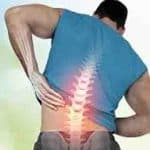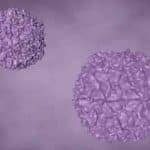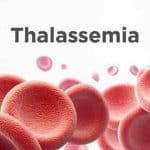ISLAMABAD, Oct 05 (Online): Chronic pain can occur in any part of the body. One of the most common types of this condition is chronic back pain.
A recent study by researchers from the University of Colorado Anschutz Medical Campus provides new evidence supporting the effectiveness of brain-based treatments for chronic back pain.
This study was recently published in the journal JAMA Network OpenTrusted Source.
An estimated 20% of the world’s populationTrusted Source lives with chronic painTrusted Source — a condition causing consistent pain that continues for three months or more.
A study in 2019 found that 39% of adults in the U.S.Trusted Source live with back pain. Up to 23%Trusted Source of the world’s population has chronic low back pain, which is considered the leading causeTrusted Source of disability worldwide.
Treatment options for chronic back pain include medications, physical therapy, acupuncture, epidural steroid injections, and surgery. Previous research also shows behavioral modification techniquesTrusted Source like meditationTrusted Source and cognitive behavioral therapyTrusted Source are helpful treatment options.
What is chronic back pain?
Chronic back pain can occur anywhere in the spineTrusted Source. Most people experience lower back pain located in the lumbar spineTrusted Source. However, the location of the back pain can sometimes be hard to pinpoint.
There are many reasons why chronic back pain may occur, including:
• Spinal cord injury
• Improper posture
• muscle atrophy
• Repetitive movements like constant bending over or heavy lifting
• slipped or bulging discs
• Spinal diseases such as arthritis or spinal stenosis
• agingTrusted Source
• Back or spinal deformities such as scoliosis or lordosis
Symptoms of chronic back pain include:
• Pain (mild to intense), aching, and/or burning that does not go away
• Pain that extends to the legs, hips, buttocks, and/or past the knees
• swelling in the back
• Difficulty urinating
• fever
• Unintended weight loss
The brain and chronic back pain connection
Over the past few years, researchers have been studying the link between the brain and chronic back pain.
A study published in January 2018 found people with chronic low back pain had decreased activityTrusted Source in certain parts of their brain involved in the release of dopamine — the body’s “feel good” hormone — that is also involved in the release of µ-opioidsTrusted Source that help relieve pain.
And a review of research published in July 2019 noted that the development of chronic pain is linkedTrusted Source to synaptic plasticityTrusted Source and changes in the central nervous system and other neural areasTrusted Source that regulate pain.
“For decades studies have tried to link back pain to back problems like bulging discs or bad posture,” Dr. Yoni Ashar, assistant professor of internal medicine at the University of Colorado Anschutz Medical Campus and first author of this study, told Medical News Today. “It turns out these sorts of things only cause relatively few cases of chronic back pain. Most cases of chronic back pain are caused primarily by brain changes, like the brain amplifying signals it receives from the back.”
“There are two very important things to emphasize,” he continued. “First, the pain is always real. Sometimes, it can be caused by issues in the back and sometimes it can be caused by changes in the brain — but in all cases, the pain is real. Second, the sorts of brain changes we are talking about are completely reversible, and recovery from pain is possible.”
– Dr. Ashar
Using pain reprocessing therapy to relieve chronic back pain
For this study, Dr. Ashar and his team studied the impact of pain reprocessing therapyTrusted Source on people with chronic back pain. Pain reprocessing therapy is a psychological treatment that teaches people to recognize pain signals sent to the brain as less threatening.
“Chronic pain is driven by a cycle of fear and avoidance,” Dr. Ashar explained. “People very naturally think their pain means their body is injured or broken, so the pain is perceived as highly threatening, and they avoid doing any activities that might make (the) pain worse. Once people shift their thinking to see the pain as due to misfiring brain pathways, they can learn not to fear or avoid the pain and to help recalibrate those brain pathways to bring down the pain.”
The study enrolled 151 participants with chronic back pain who received either pain reprocessing therapy or a placebo. The pain reprocessing therapy included a one-hour telehealth session with a doctor and eight individual one-hour sessions with a therapist twice weekly for four weeks.
Study participants who received the placebo watched two videos describing how placebos can powerfully relieve pain and received a subcutaneous saline injection into the back.
Surprising findings on pain recovery
In a separate 2022 paperTrusted Source covering the results of this study, researchers found two-thirds of participants treated with pain reprocessing therapy reported being pain-free or nearly so after the treatment, compared to only 20% of the placebo participants.
“We were very surprised (by these findings),” Dr. Ashar said. “In past studies of different psychological treatments, participants usually reported a reduction of one or two points on a zero to 10 pain scale. And people hardly ever reported a full recovery from pain.”
“In our study, most participants reported a full or nearly full recovery from pain,” he added. “This speaks to the power of this treatment, and the need to better understand how the brain can ‘unlearn’ chronic pain.”
Change in pain attributions may offer relief
This recent paper looked at the effect of pain reprocessing therapy on pain attributions, which are people’s beliefs about the underlying causes of their pain.
Before receiving pain reprocessing therapy, only 10% of study participants’ pain attributions were mind- or brain-related. Afterward, that percentage increased to 51%.
“We found that when we asked our participants before treatment what they believed to be the cause of their pain, almost no one mentioned the mind or the brain,” Dr. Ashar said. “Yet we know scientifically that mind and brain processes contribute to or even generate most cases of chronic pain. There is a big gap between what most people think is causing their back pain and what we know scientifically to drive chronic pain.”
“It may be helpful for doctors to help their patients see their pain as due to fearTrusted Source, avoidanceTrusted Source, or brain processes, rather than injury or damage,” he continued. “In our study, the more people shifted to seeing their pain as caused by something in the mind or brain, the more their pain was reduced. Many doctors are worried that their patients will not respond well to the idea that changes in the brain are driving the pain. But, this is often a hopeful message because these brain changes are reversible and recovery from pain is possible.
Follow the PNI Facebook page for the latest news and updates.








